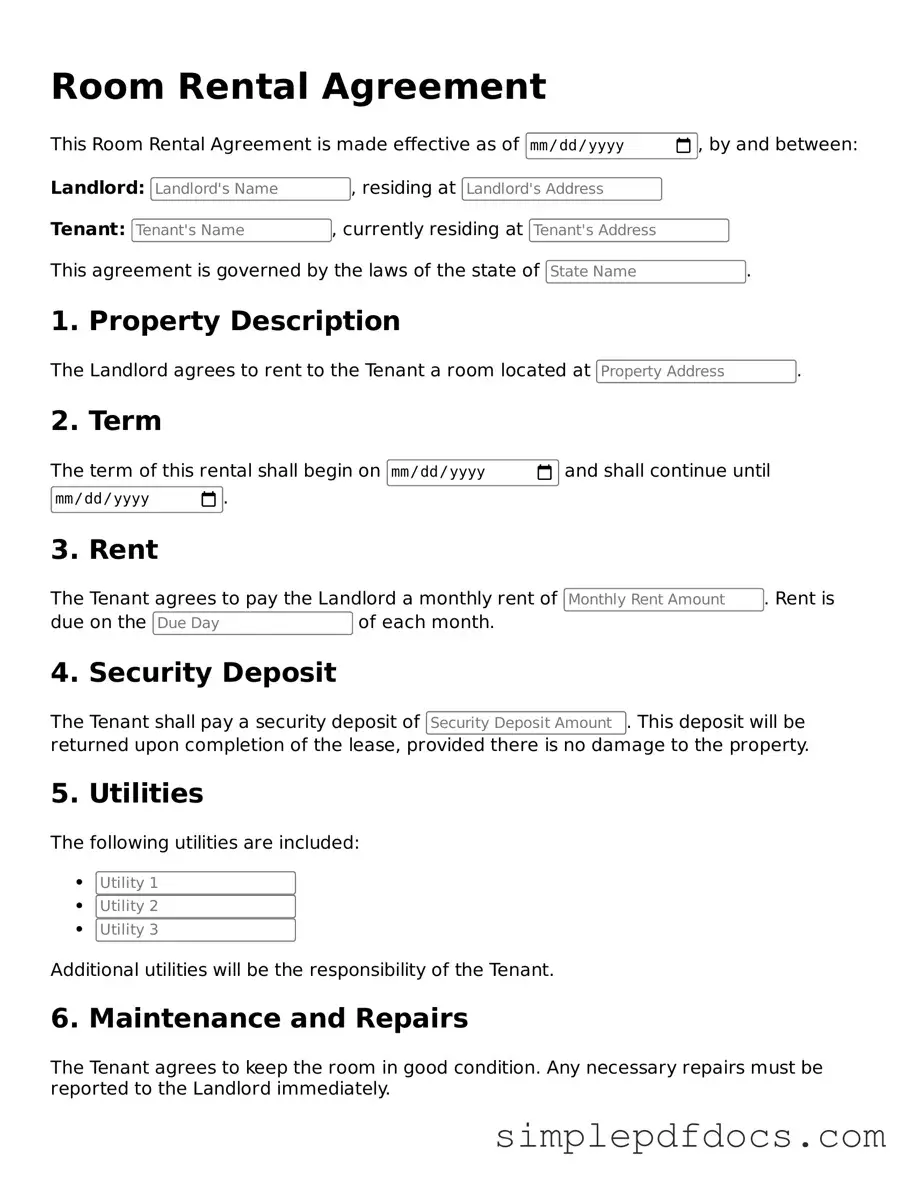Attorney-Approved Room Rental Agreement Form
The Room Rental Agreement form is a legal document that outlines the terms and conditions between a landlord and a tenant for renting a room. This agreement serves to protect the rights of both parties and ensures clear communication regarding rental expectations. Understanding its components is essential for a smooth rental experience.
Get Document Here
